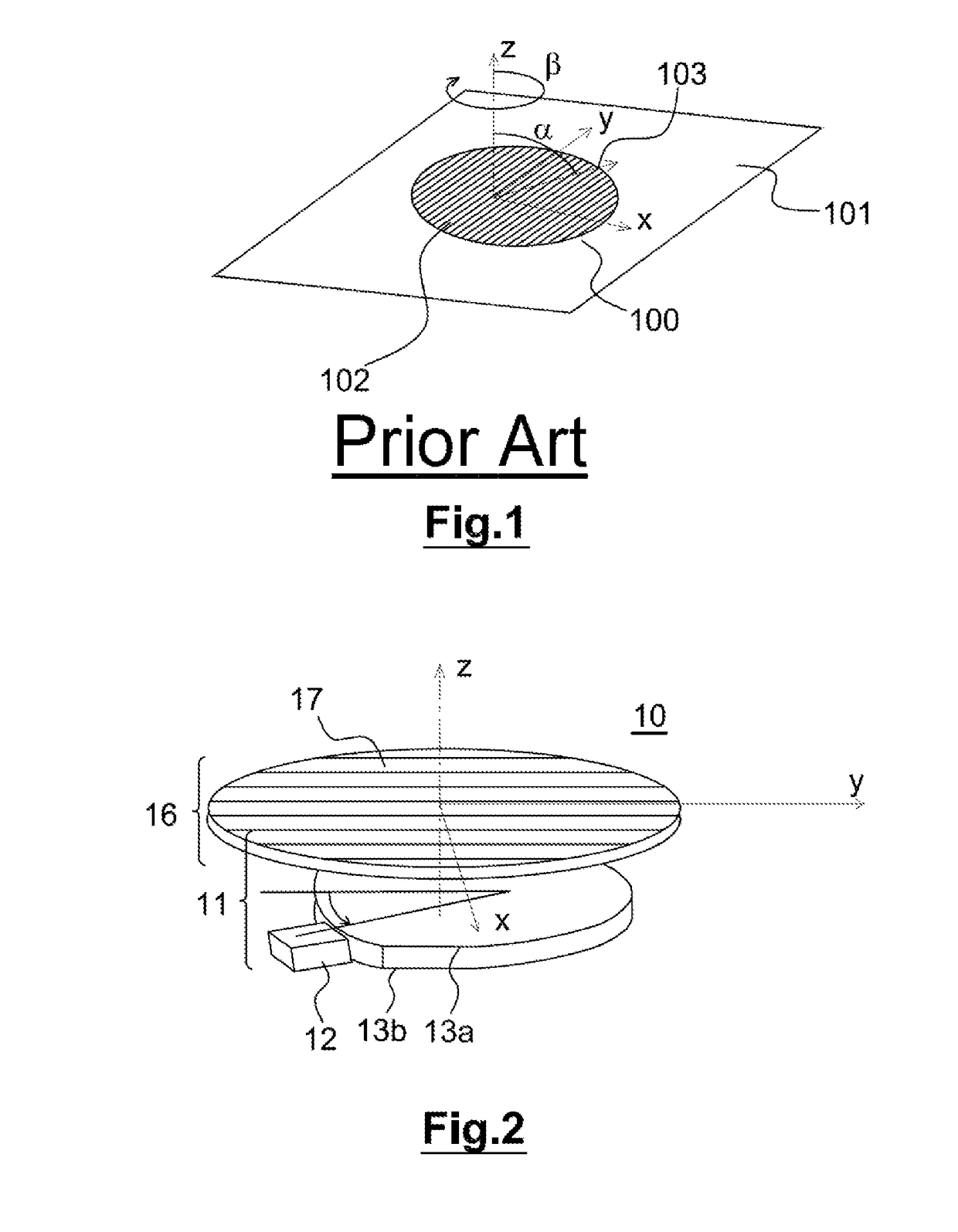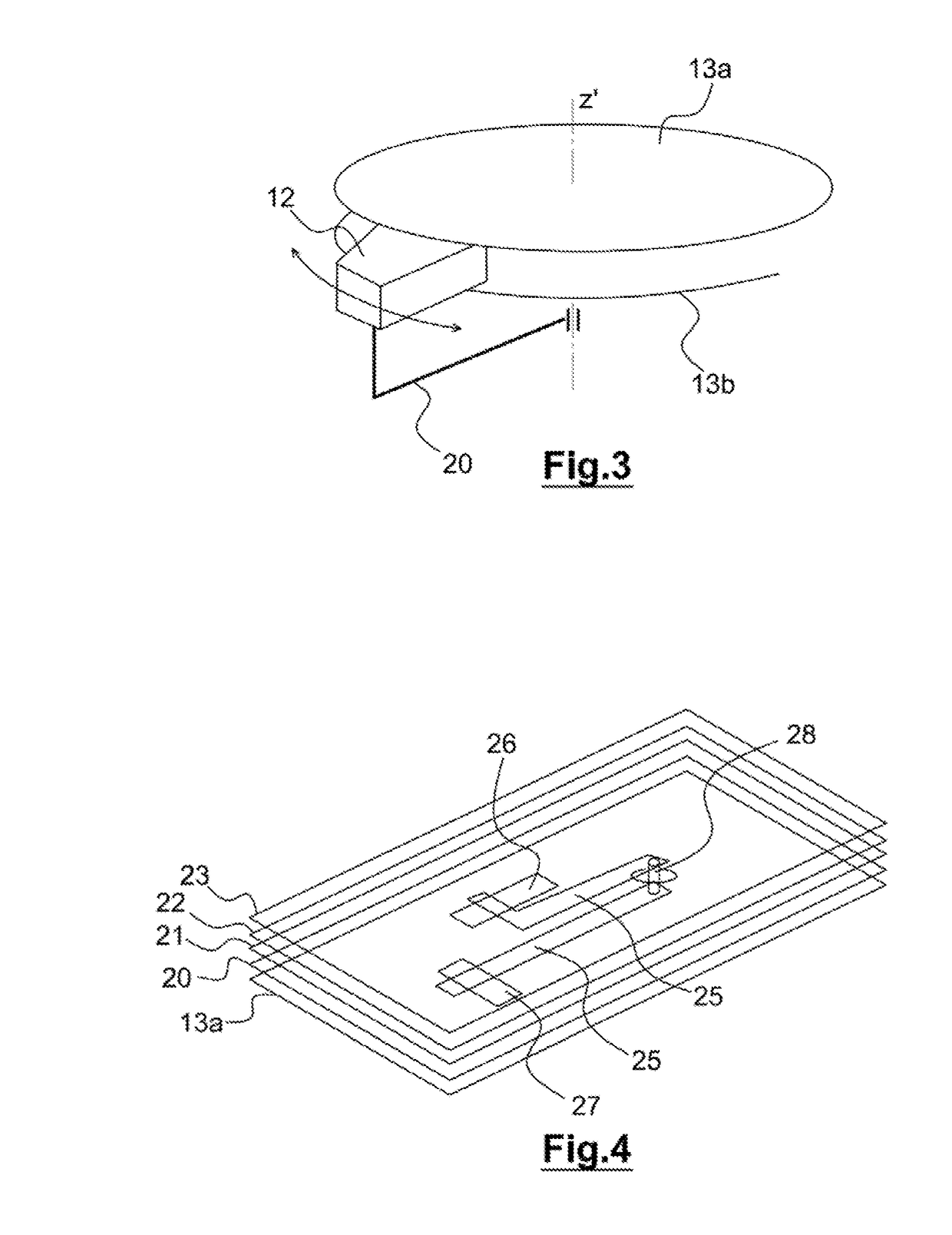Flat antenna for satellite communication
a satellite communication and antenna technology, applied in the direction of antennas, particular array feeding systems, coupling devices, etc., can solve the problems of limiting the number of directions in which the antenna can be pointed, affecting the pointing direction, and not allowing simultaneous operation in two very different frequency bands
- Summary
- Abstract
- Description
- Claims
- Application Information
AI Technical Summary
Benefits of technology
Problems solved by technology
Method used
Image
Examples
Embodiment Construction
[0038]FIG. 2 reveals a flat satellite telecommunications antenna 10 consisting of a radiating board 16 linked to an adaptation means 11 able to modify the delays of the fields emitted or received by the radiating board 16.
[0039]The radiating board 16 extends in a plane xy and comprises several radiating lines 17 disposed along the axis y at a spacing of about half a wavelength along the axis x. Each radiating line 17 consists of an alignment of N radiating elements (not represented), for example dipoles, patches or slots disposed at a spacing of less than a wavelength along the y axis and fed by a distributor comprising one input and N outputs.
[0040]The adaptation means 11 consists of a horn 12 movable in rotation between two metallic plates 13a and 13b parallel to the radiating board 16. The horn 12, represented in FIG. 3, is movable in rotation about the axis z′ (parallel to or coincident with the axis z) extending in a direction normal to the plane xy. The mobility of the horn 12...
PUM
 Login to View More
Login to View More Abstract
Description
Claims
Application Information
 Login to View More
Login to View More - R&D
- Intellectual Property
- Life Sciences
- Materials
- Tech Scout
- Unparalleled Data Quality
- Higher Quality Content
- 60% Fewer Hallucinations
Browse by: Latest US Patents, China's latest patents, Technical Efficacy Thesaurus, Application Domain, Technology Topic, Popular Technical Reports.
© 2025 PatSnap. All rights reserved.Legal|Privacy policy|Modern Slavery Act Transparency Statement|Sitemap|About US| Contact US: help@patsnap.com



